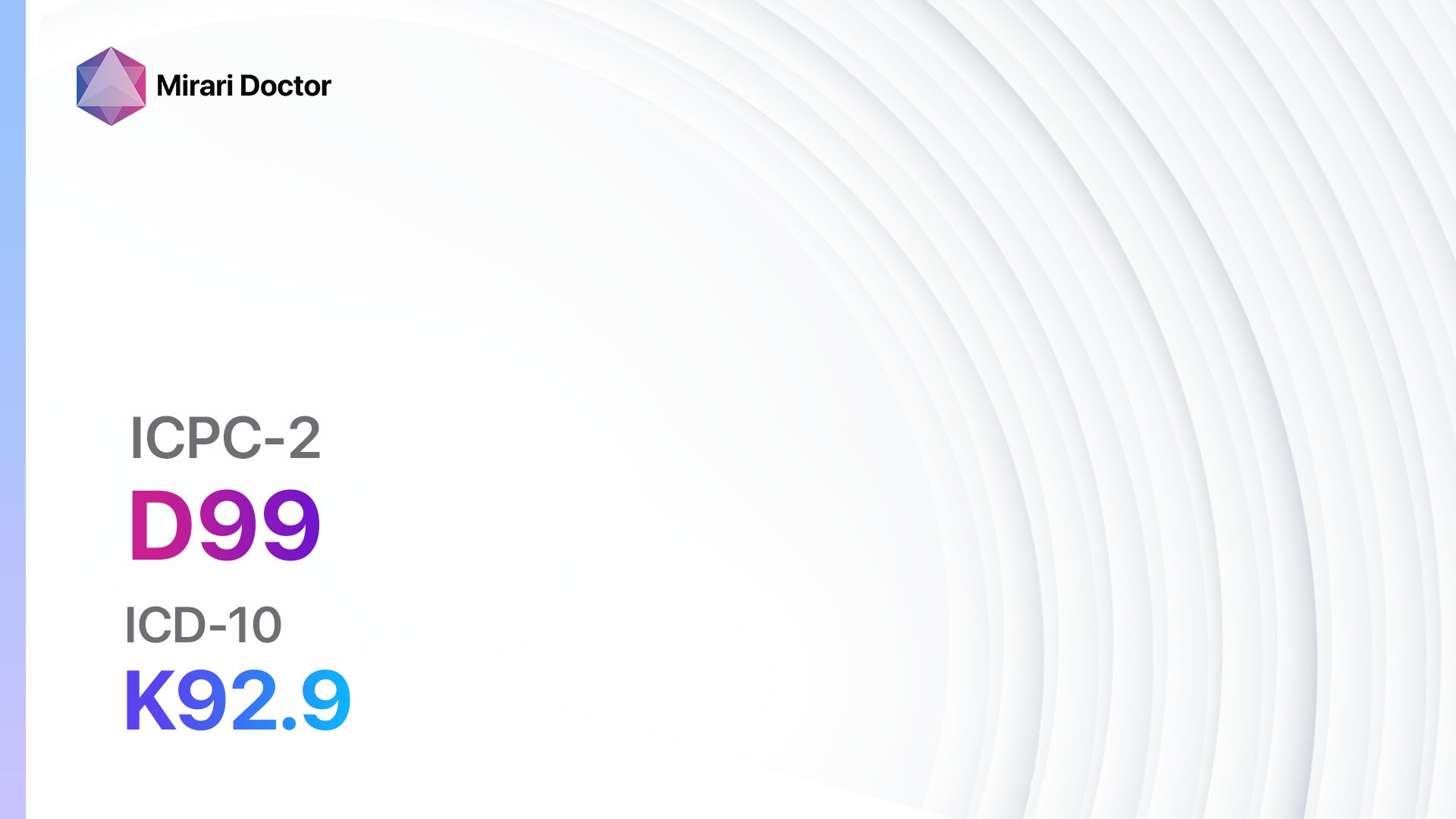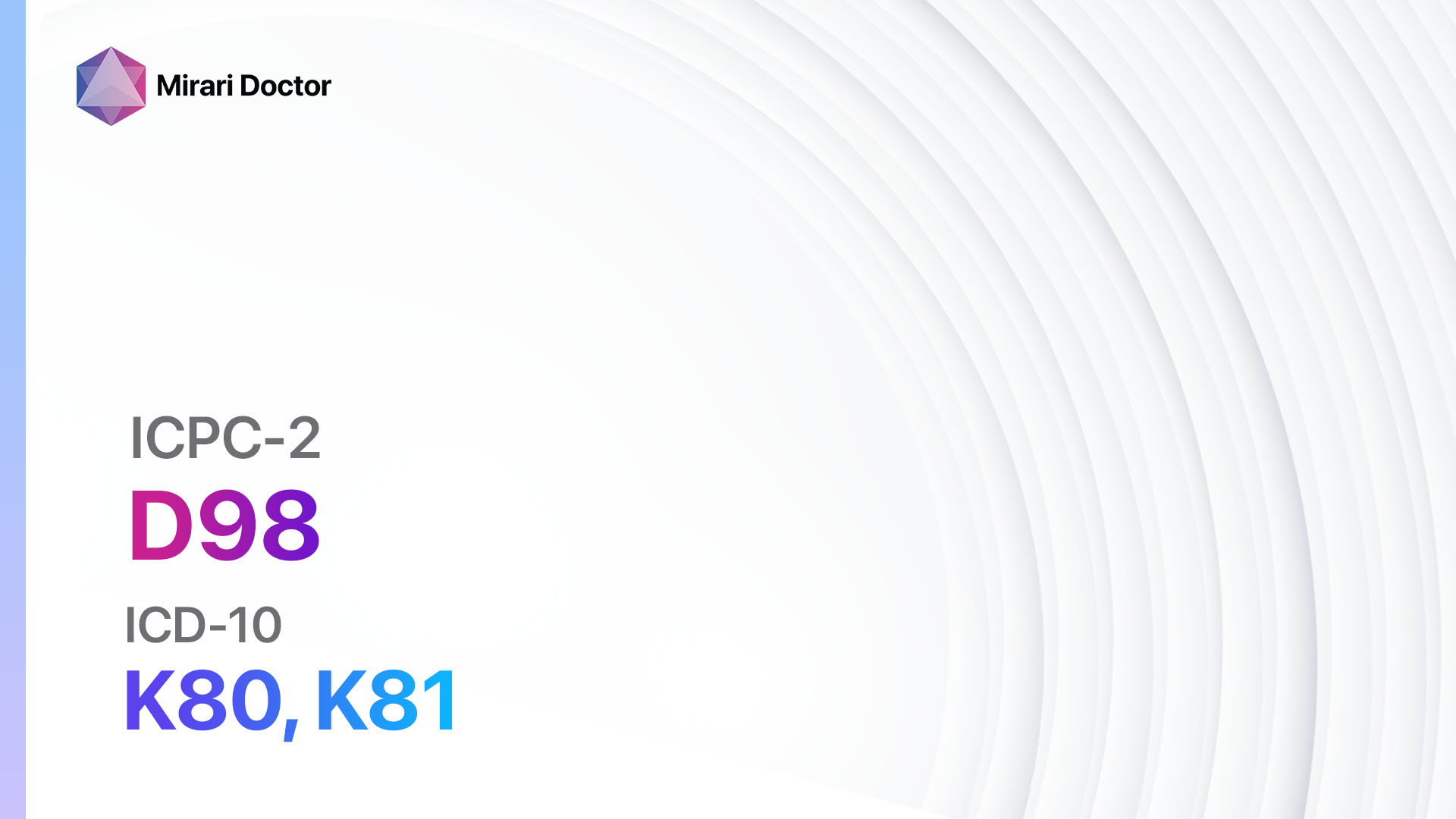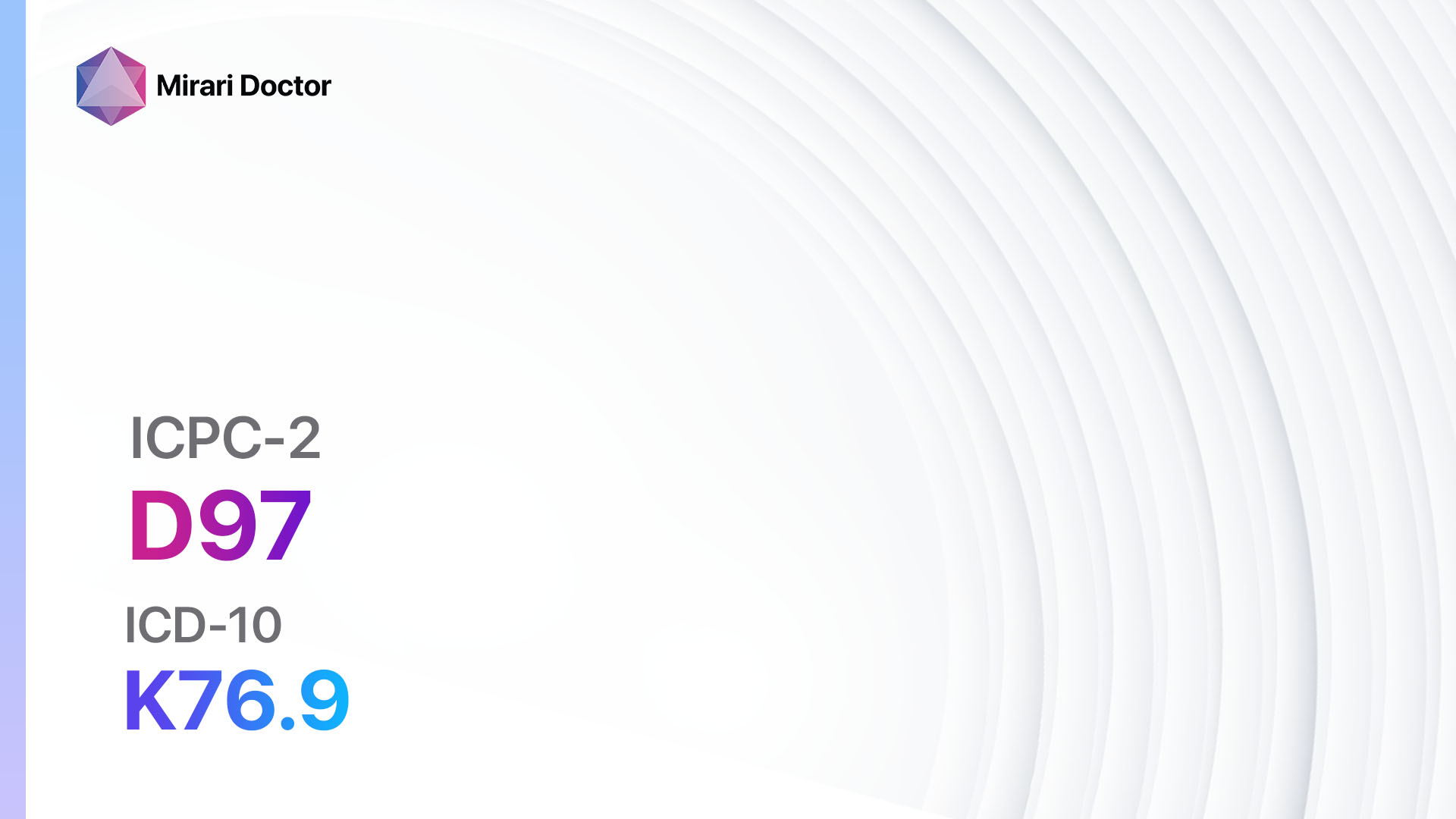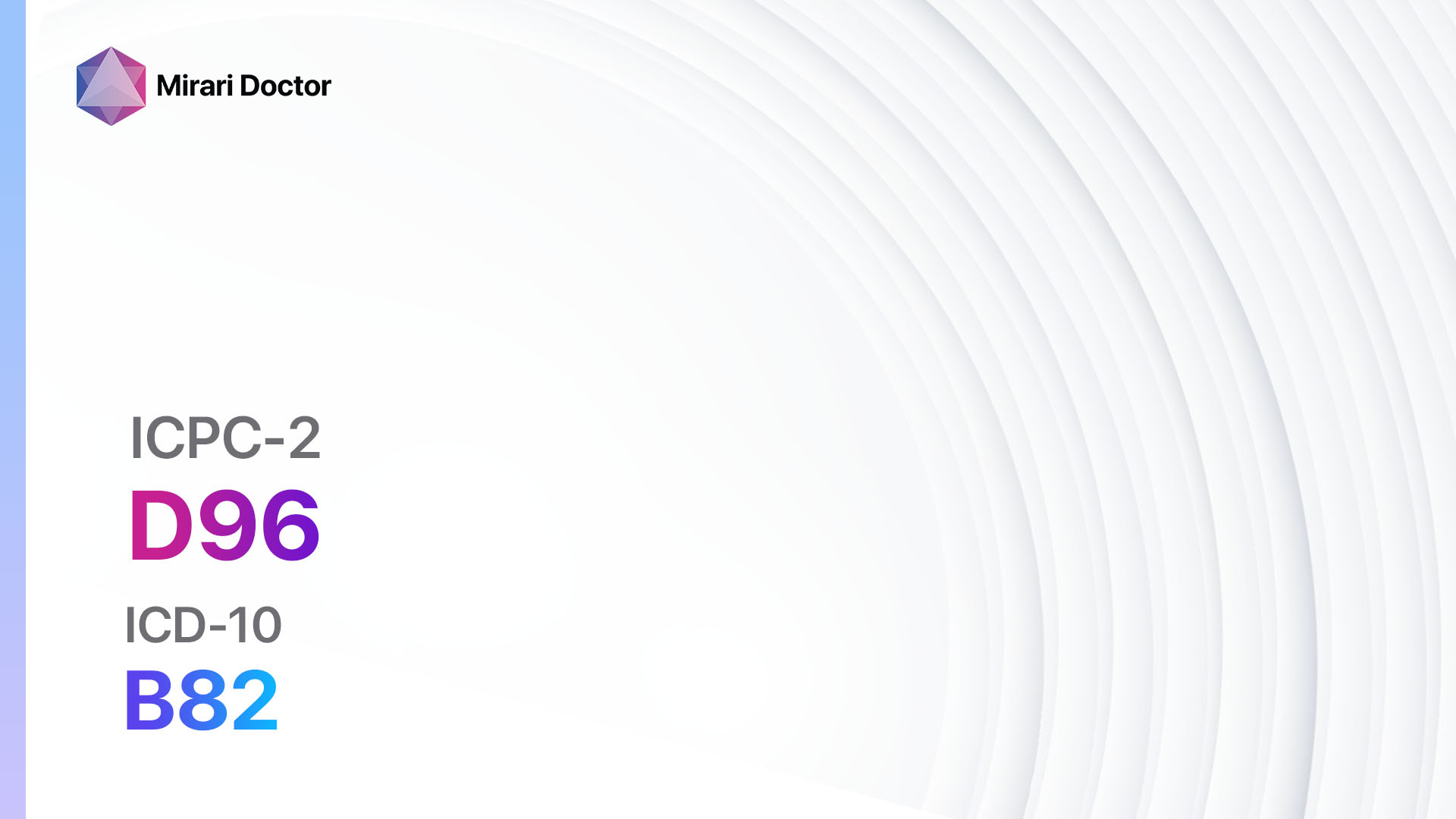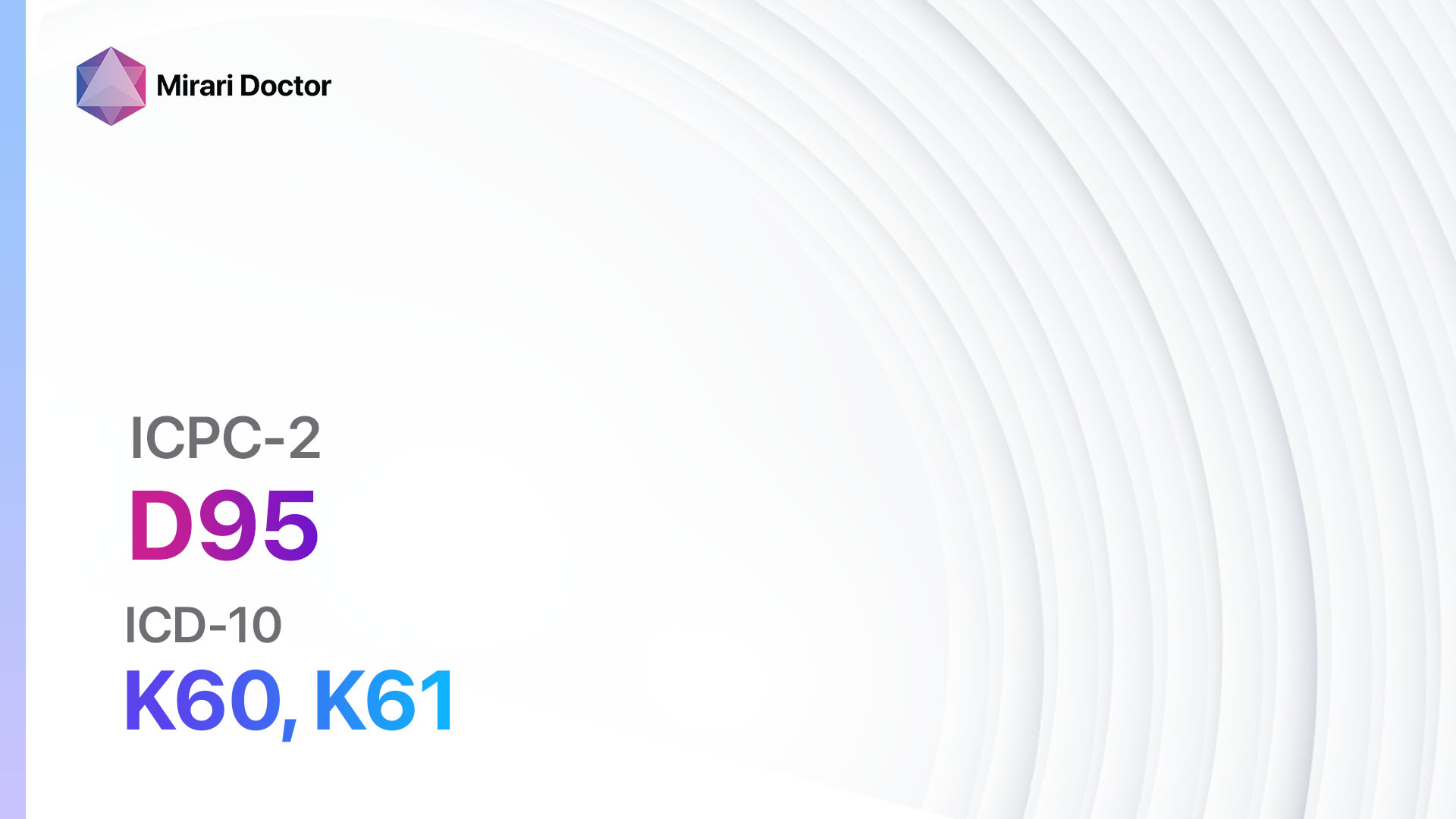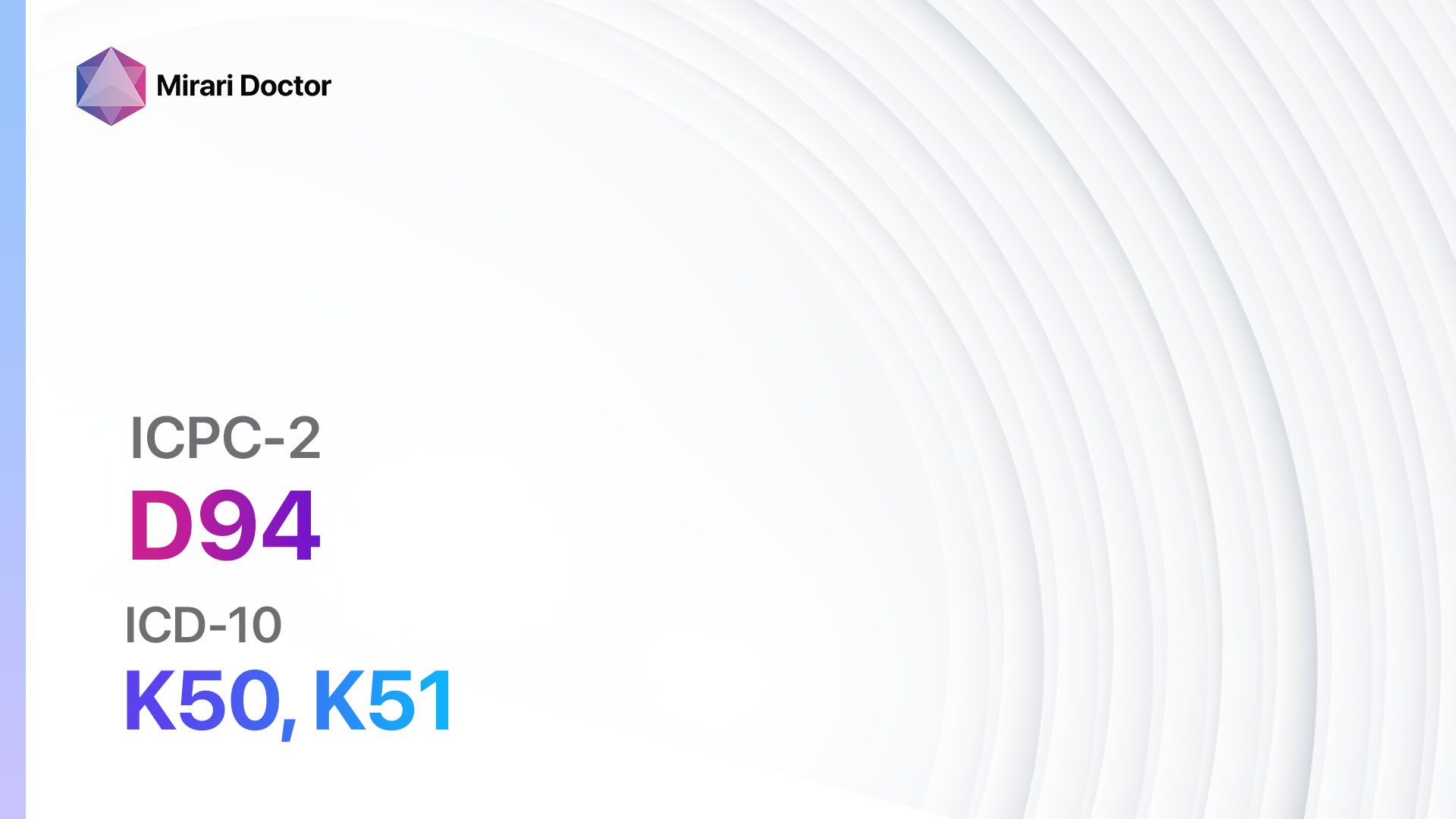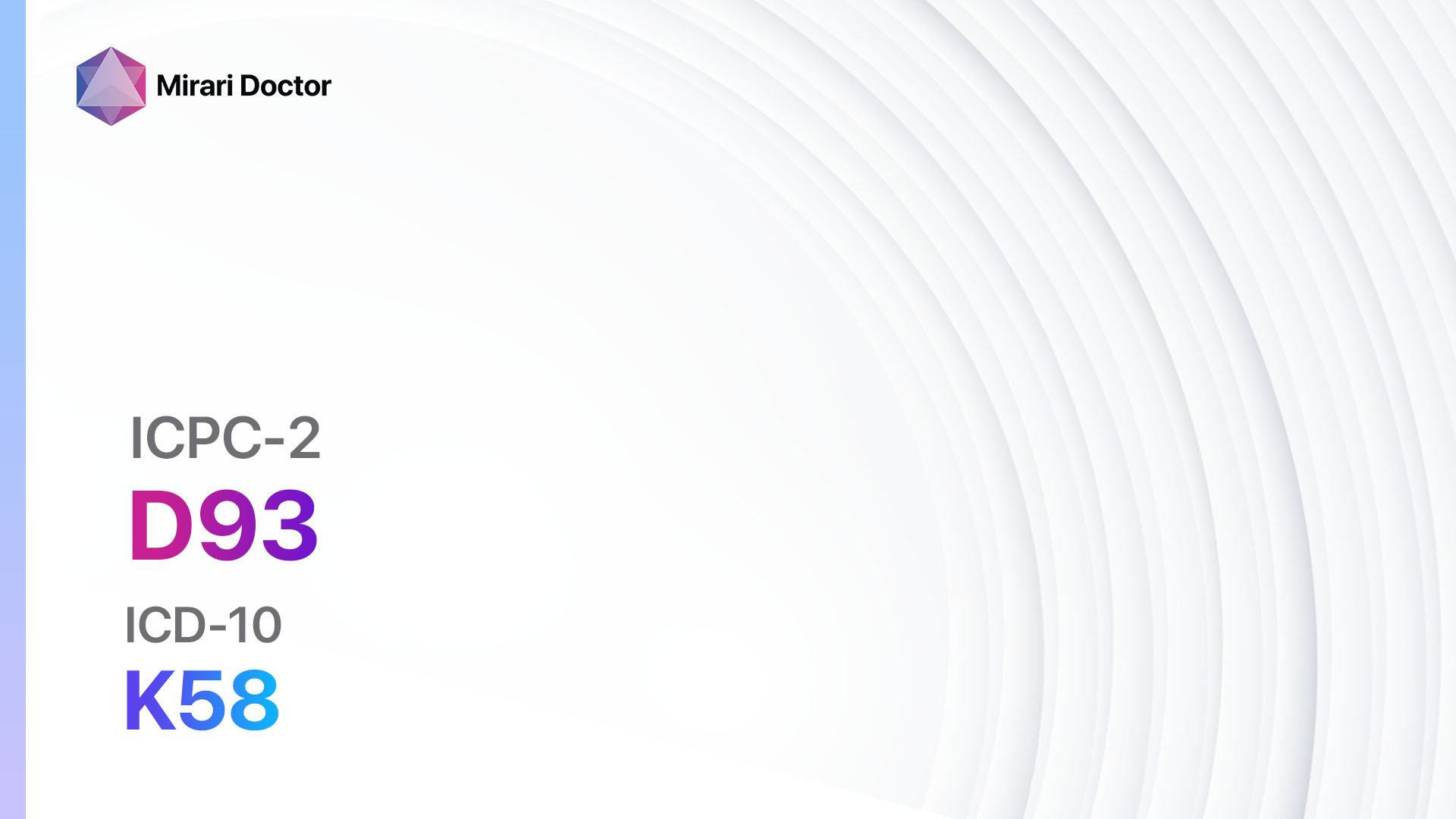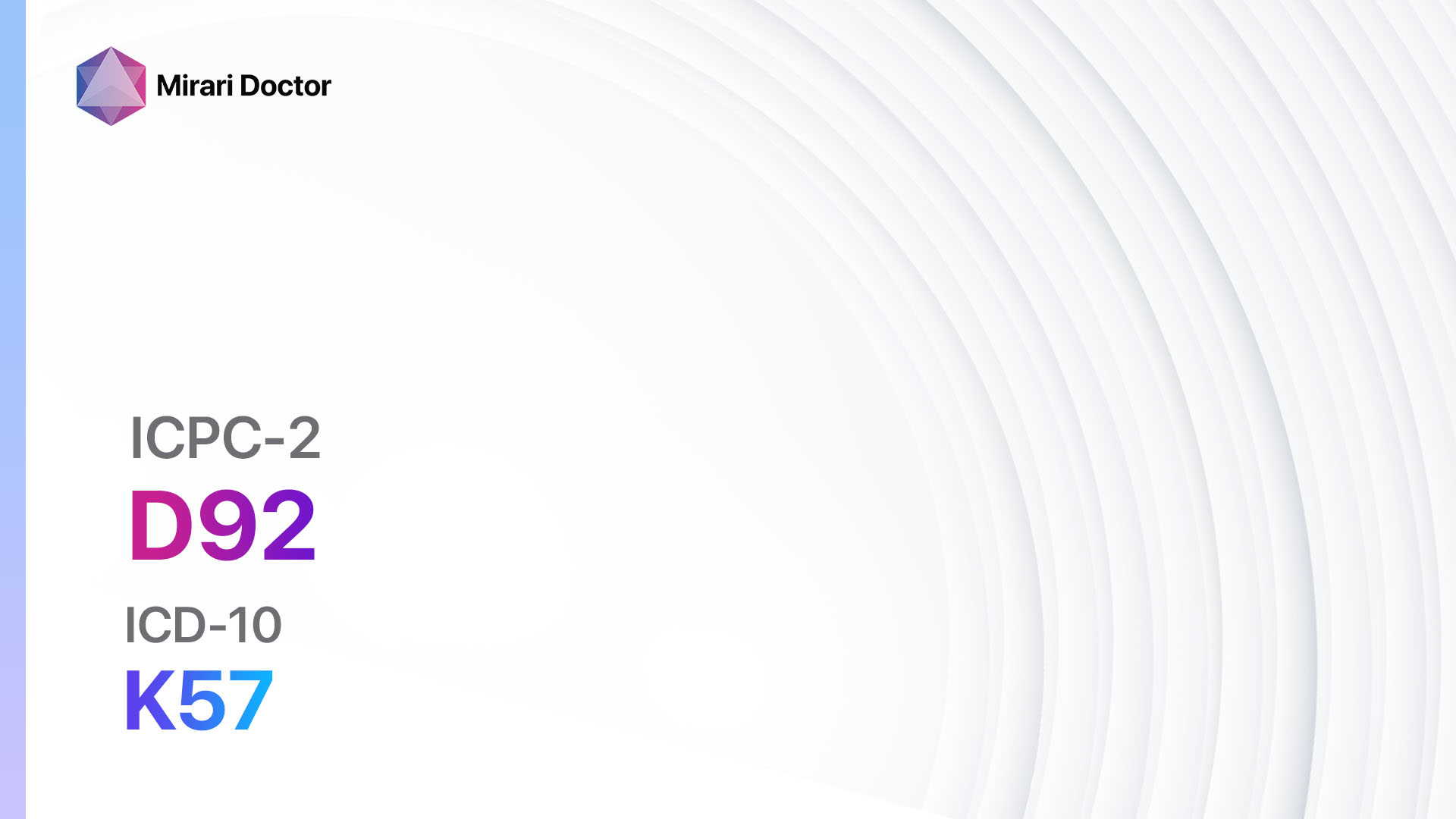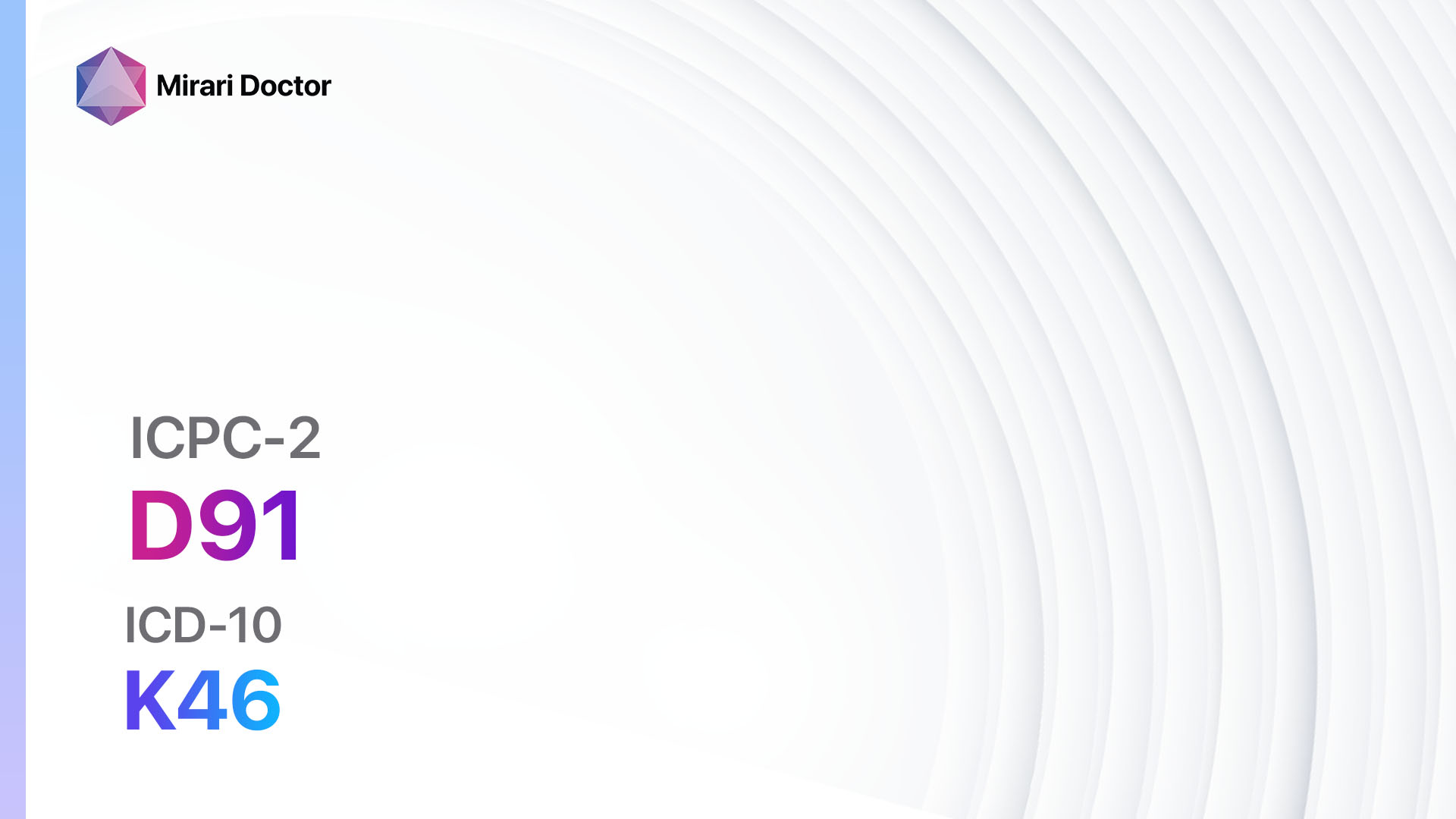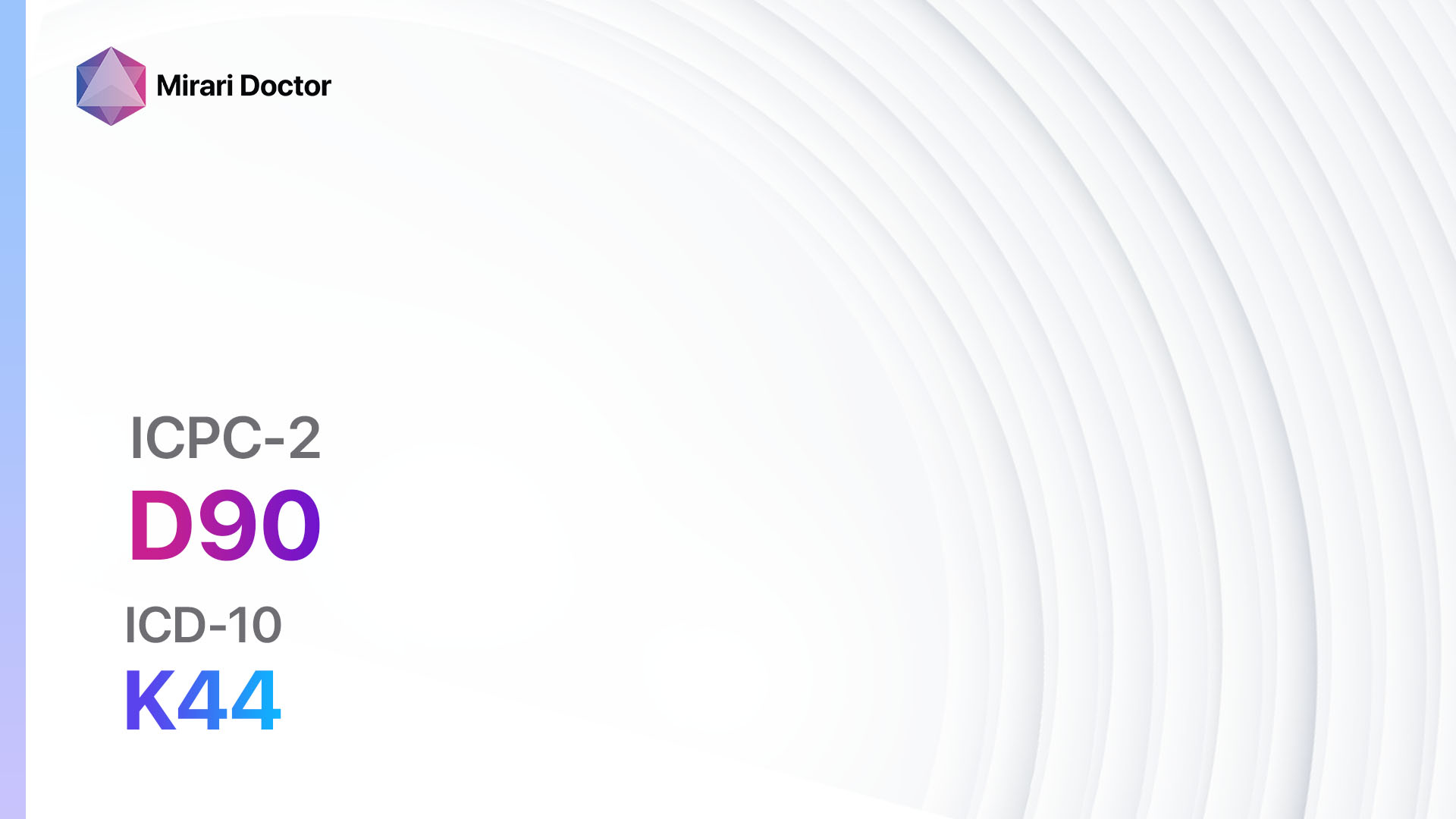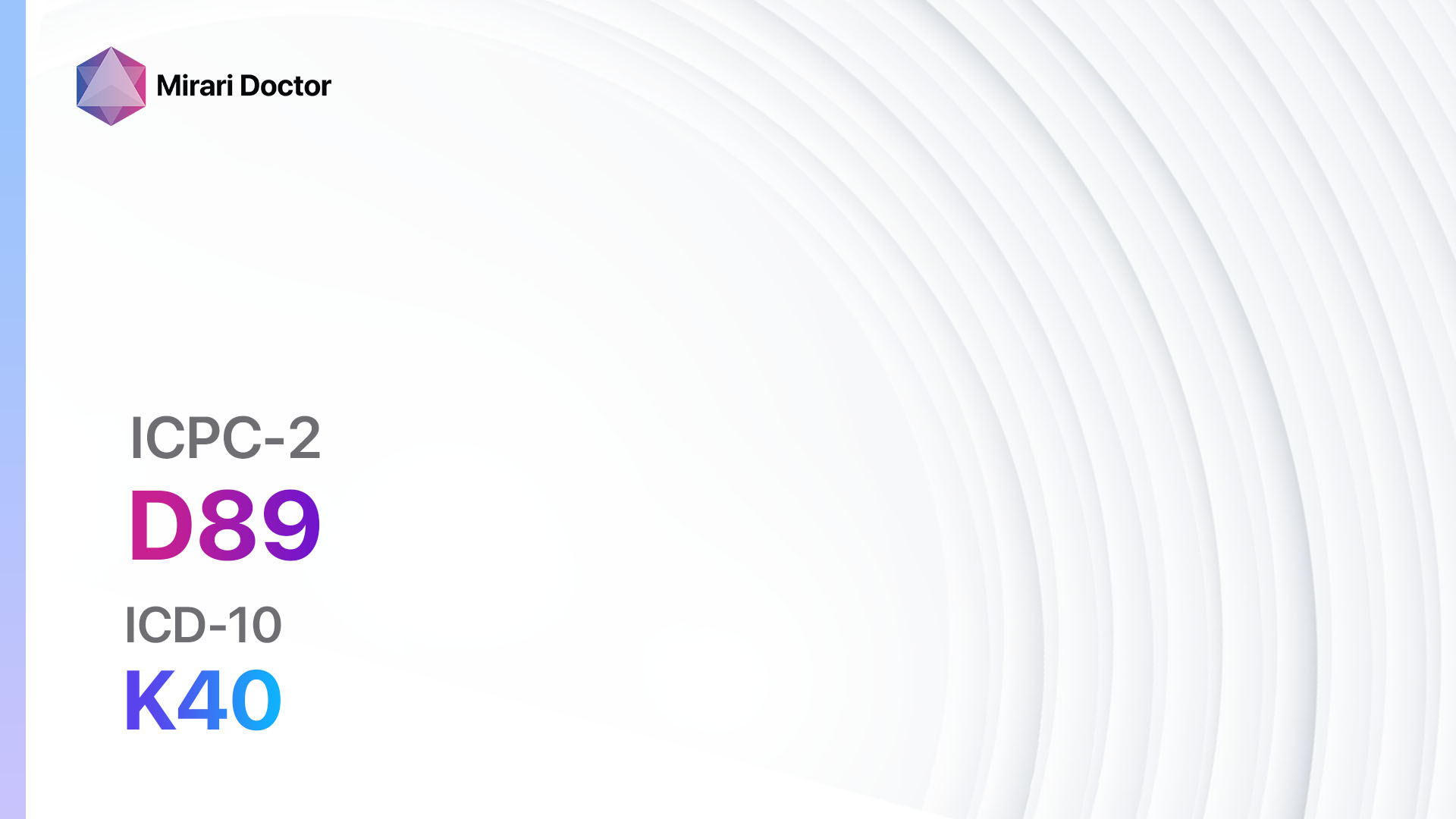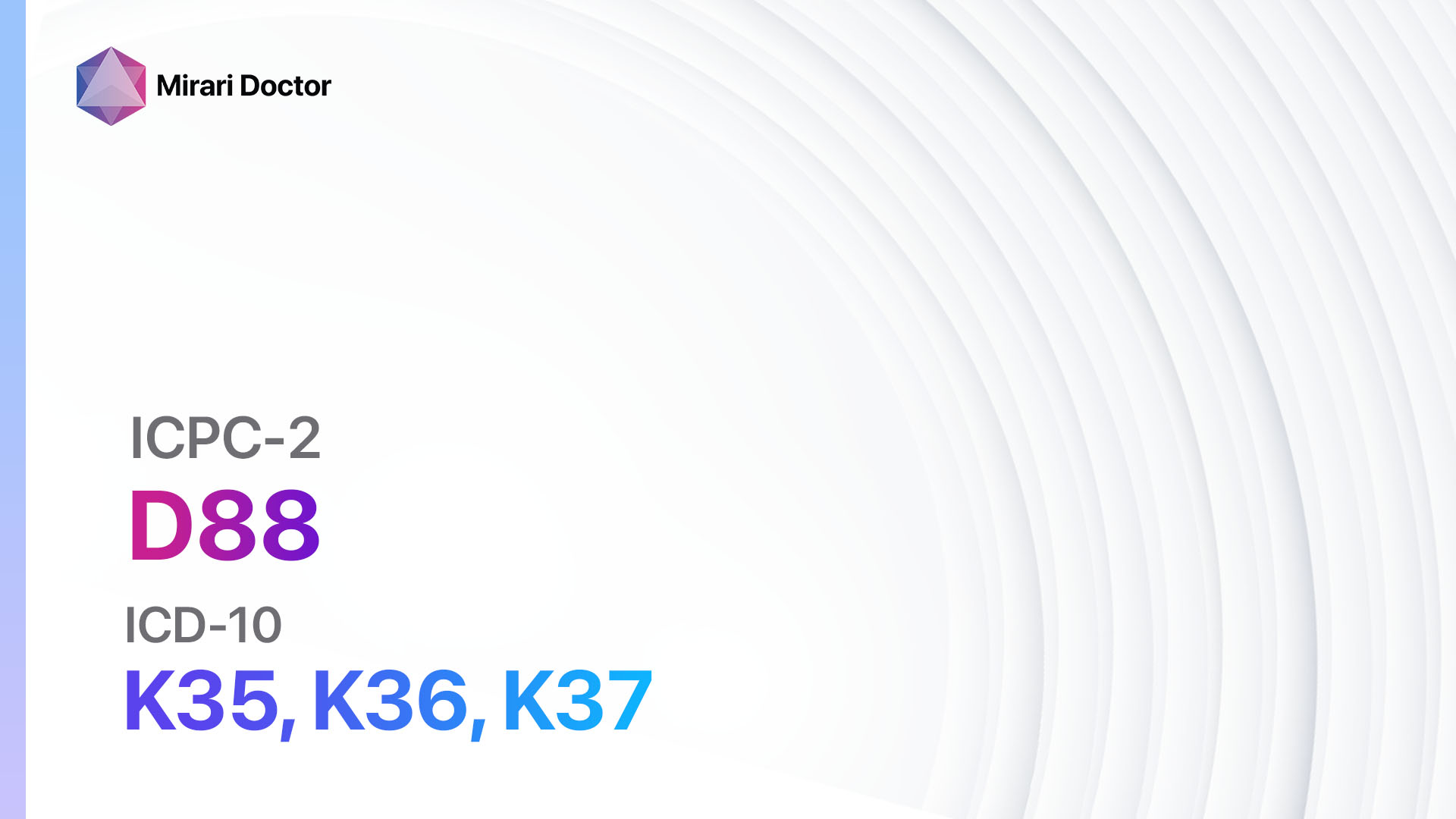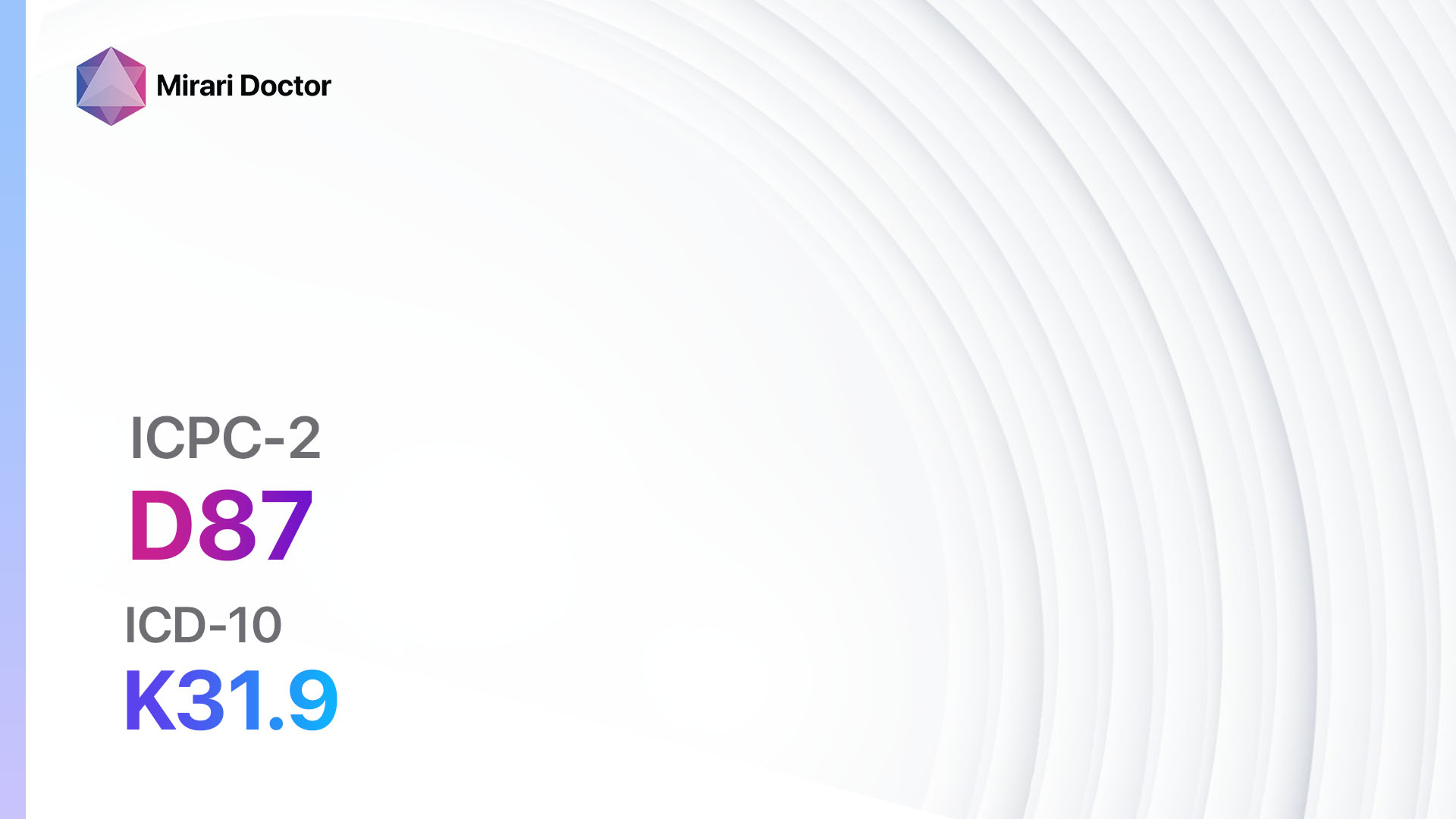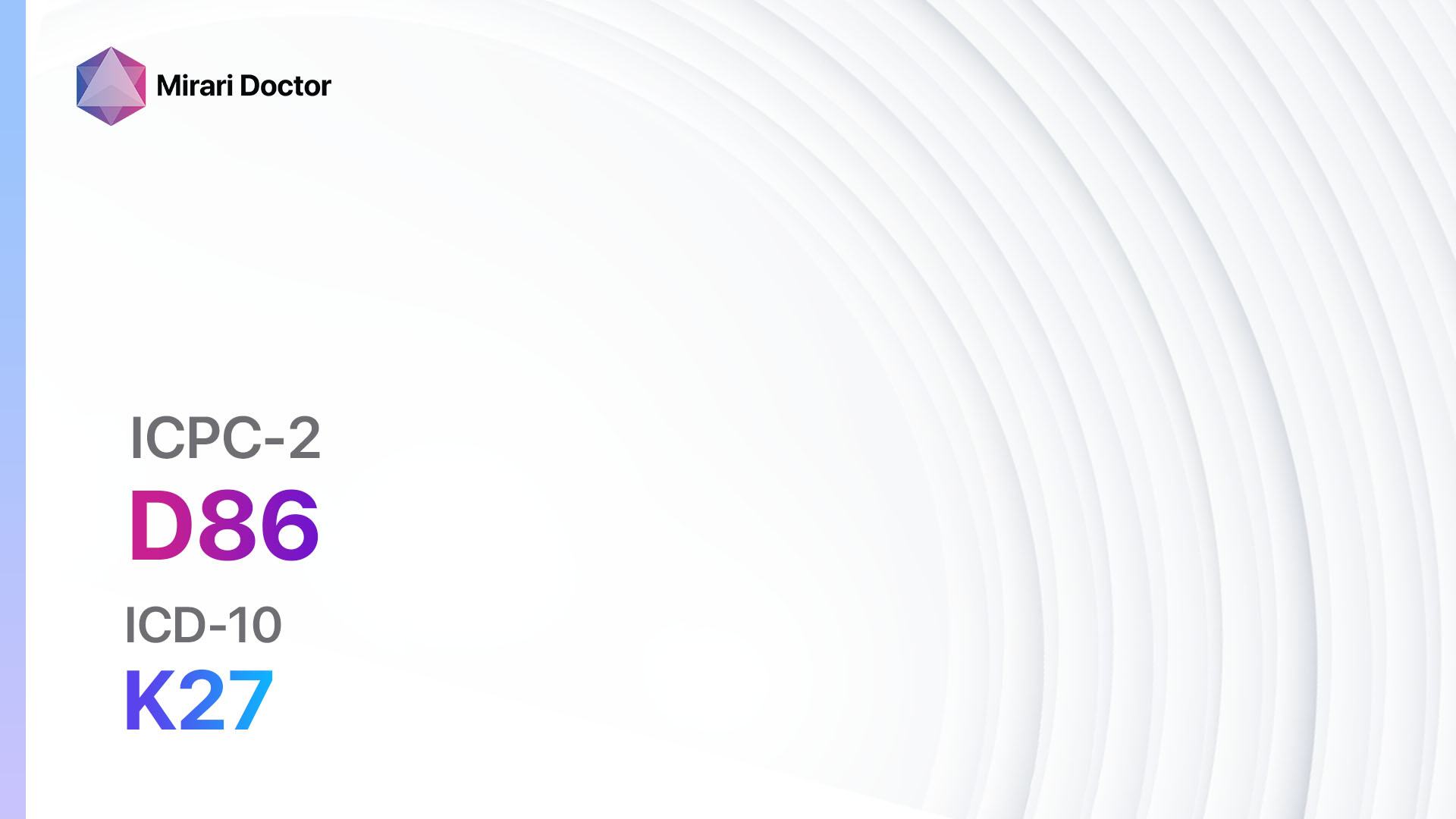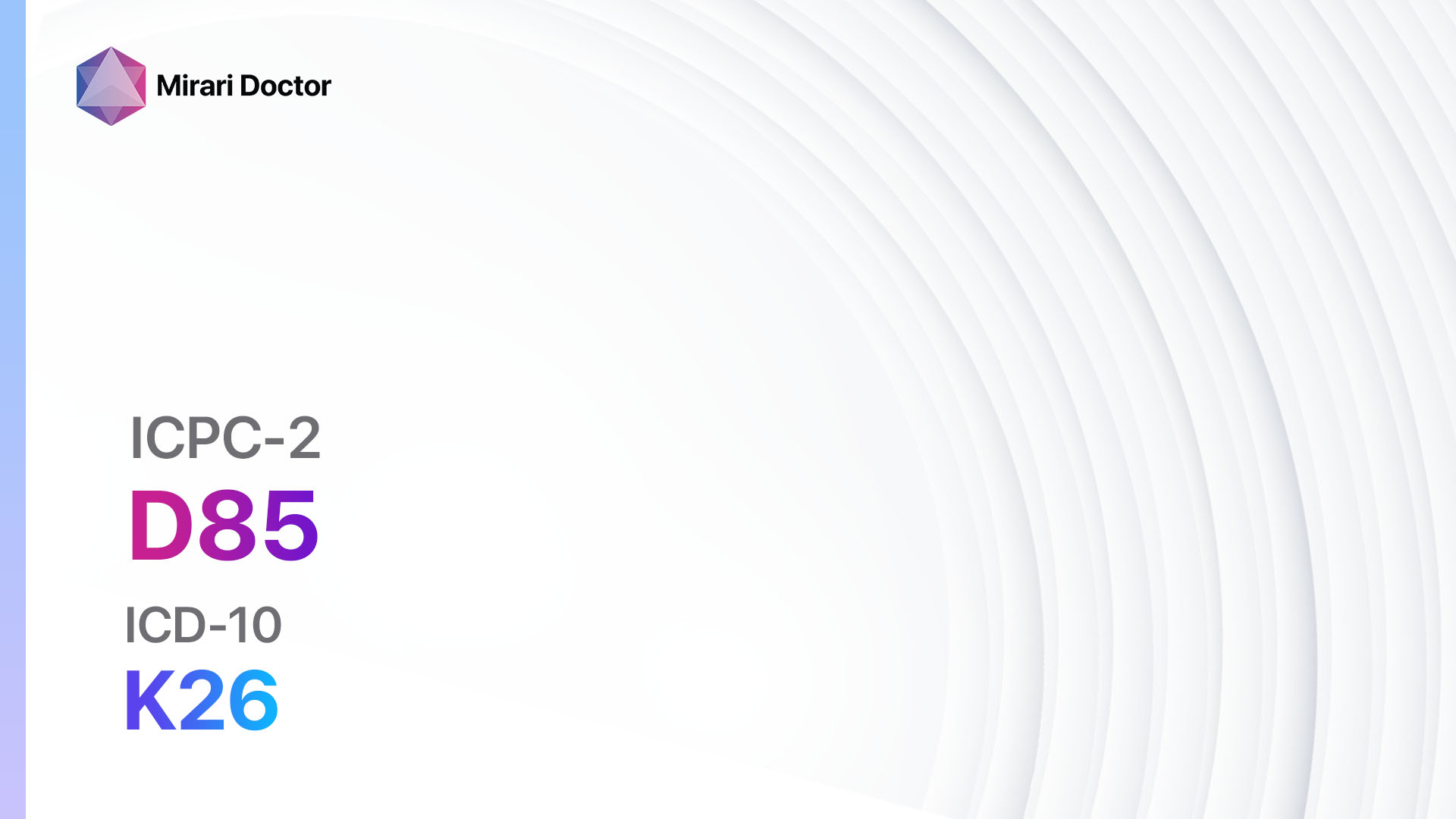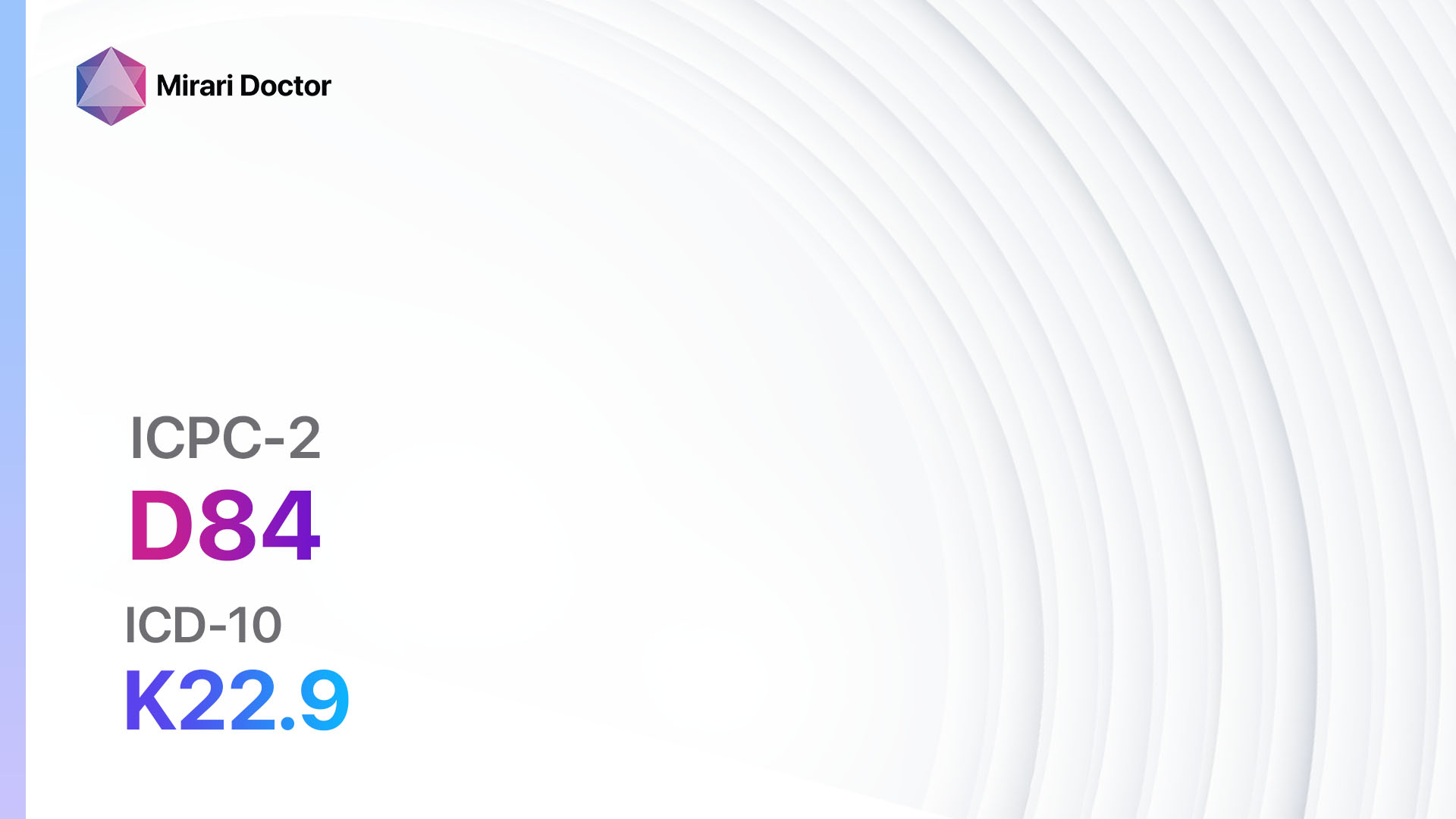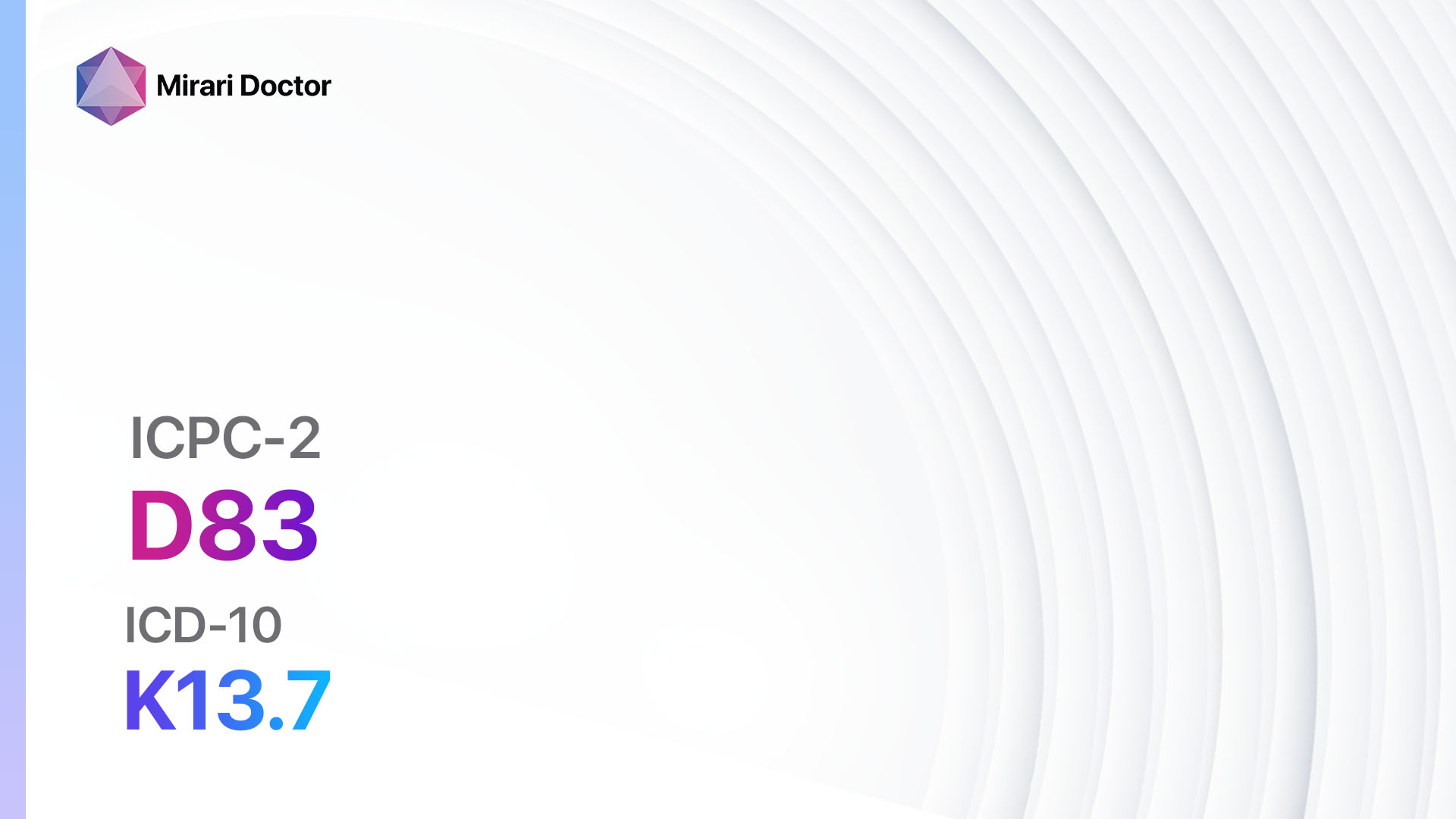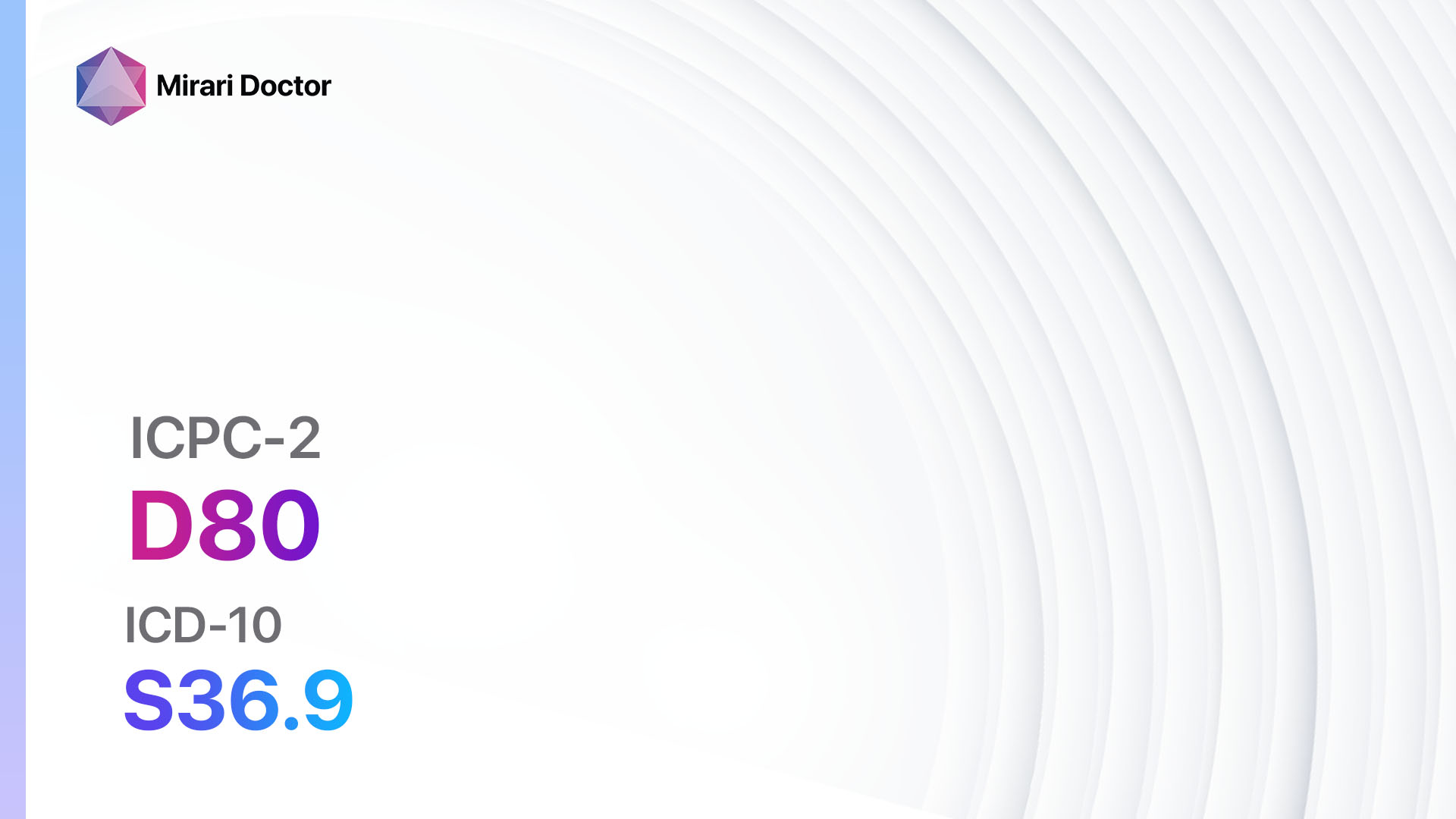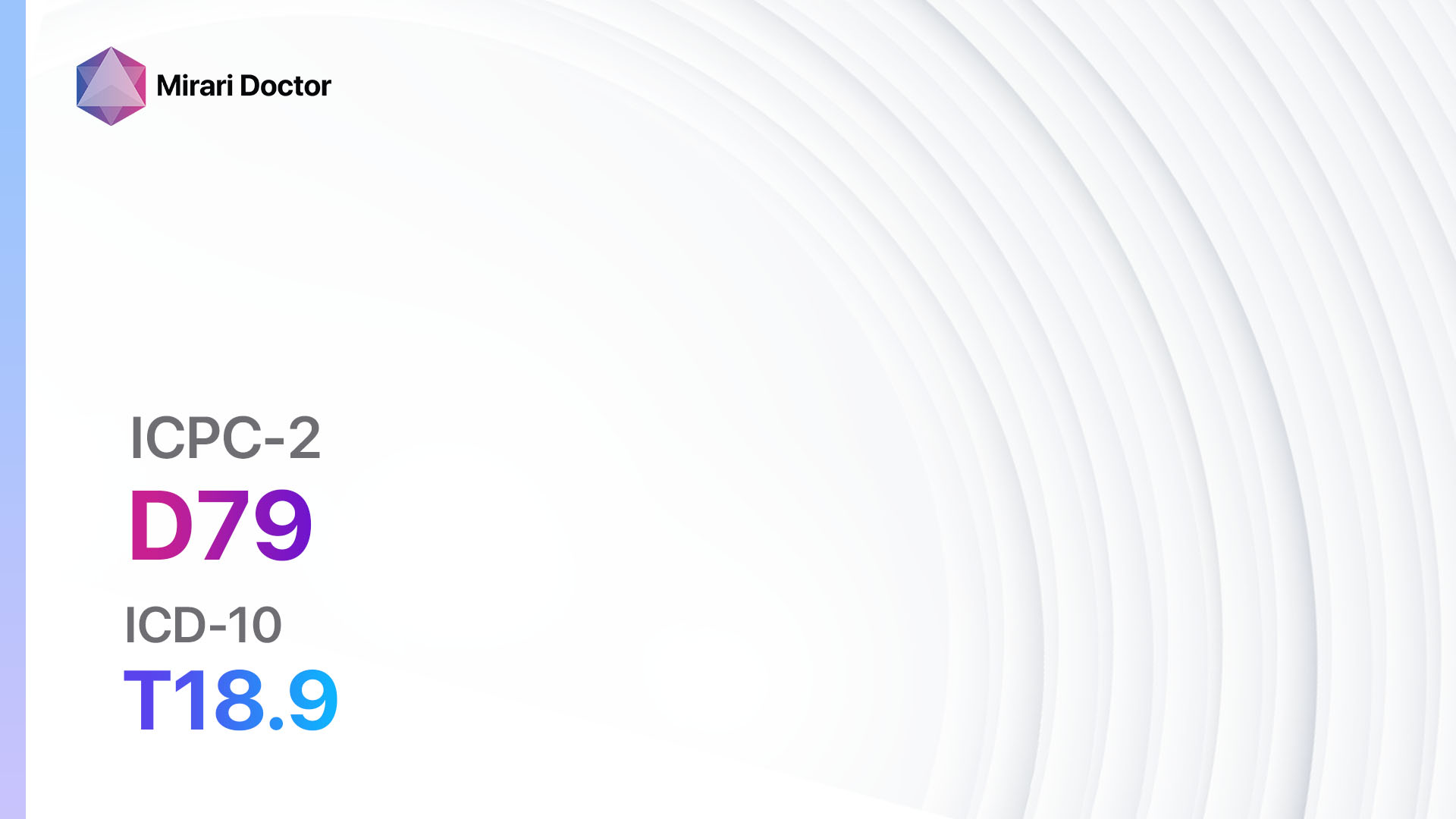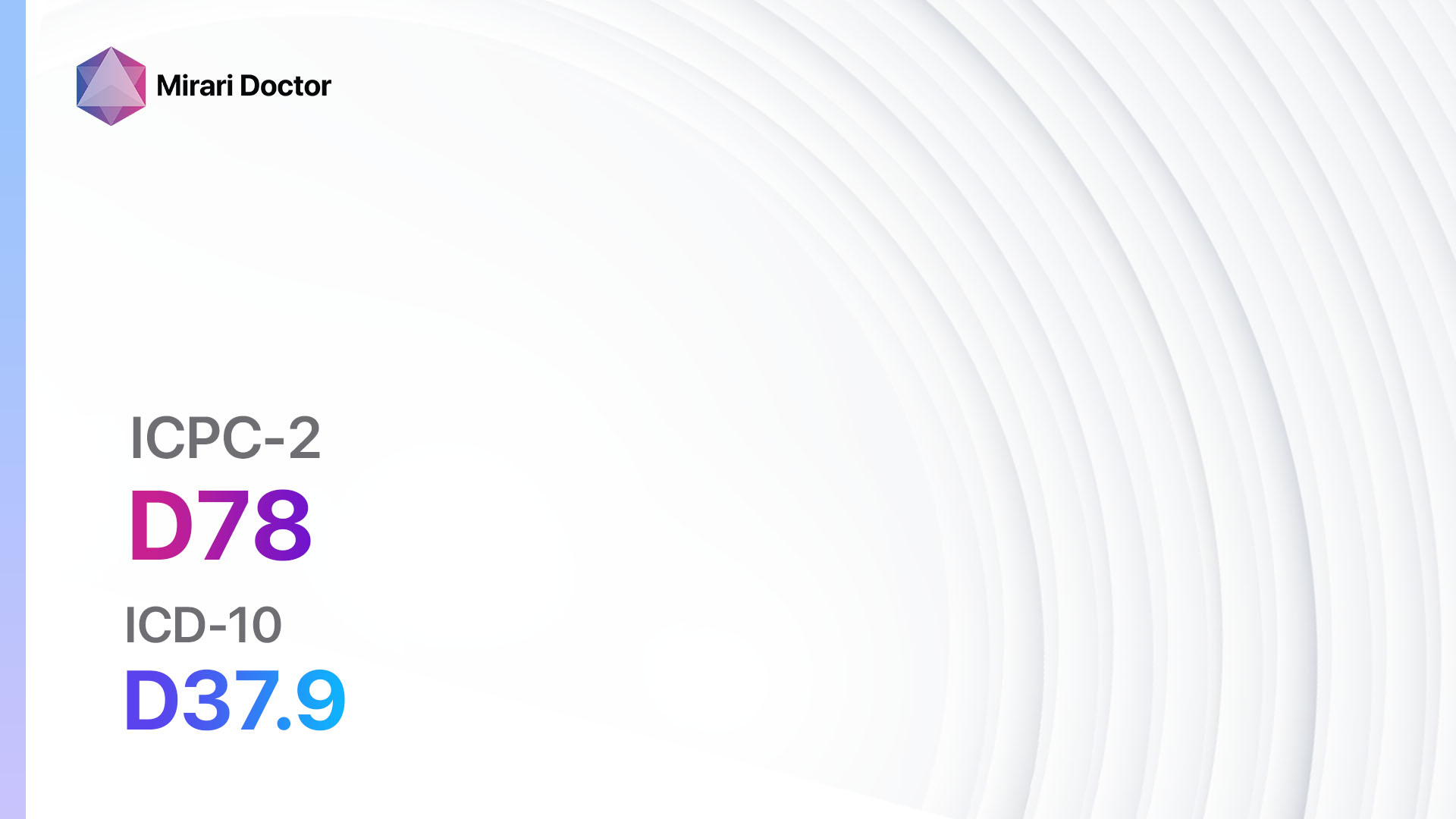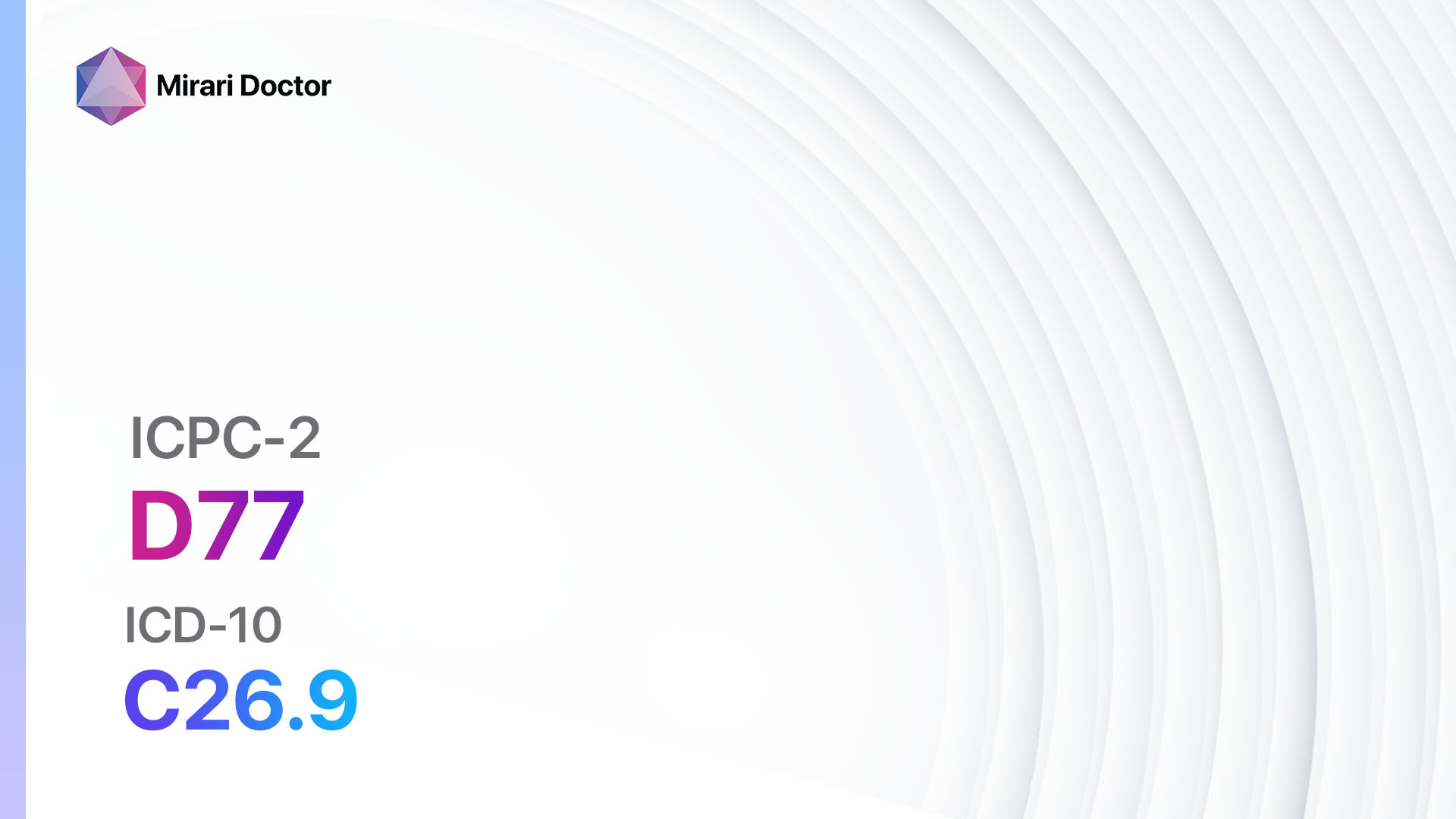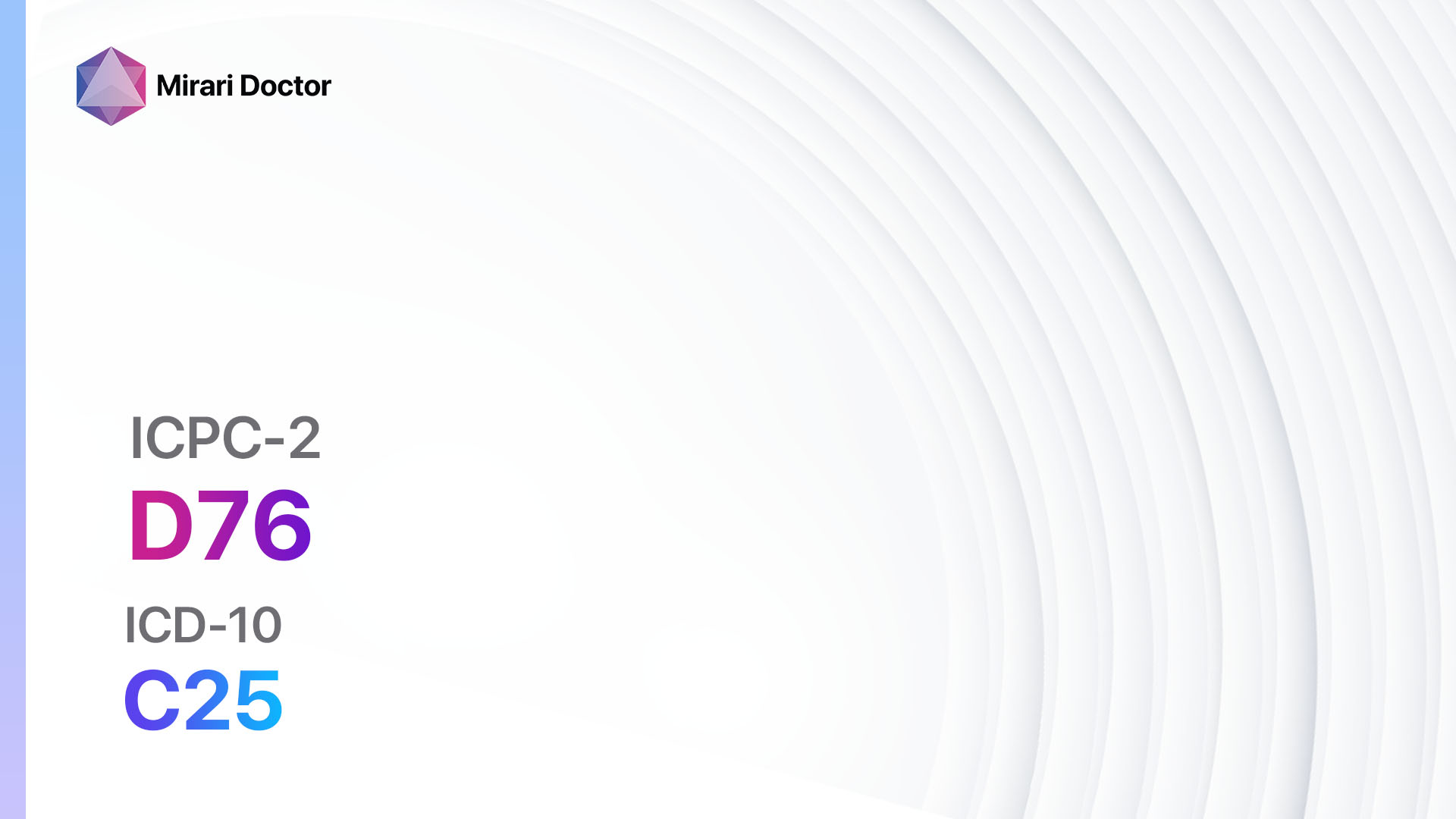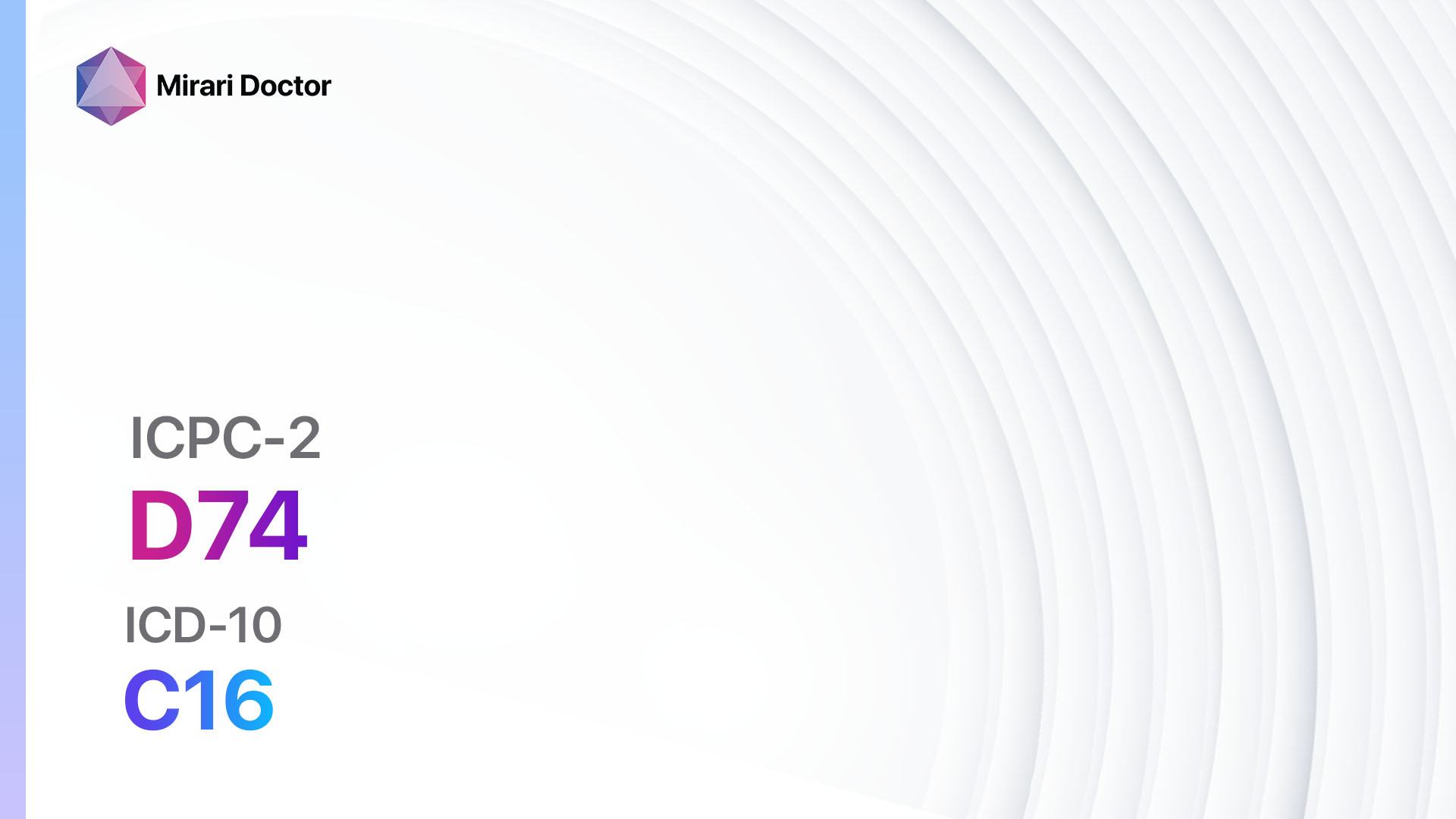
Introduction
Malignant neoplasm of the stomach, also known as stomach cancer, is a serious condition characterized by the abnormal growth of cells in the stomach lining. It is a significant health concern worldwide, with high mortality rates[1]. The aim of this guide is to provide a comprehensive overview of the diagnosis and possible interventions for malignant neoplasm stomach.
Codes
Symptoms
- Abdominal pain: Persistent pain in the upper abdomen, often described as a dull ache or burning sensation[4].
- Nausea and vomiting: Frequent episodes of nausea and vomiting, especially after meals[4].
- Unintentional weight loss: Significant weight loss without any apparent cause[4].
- Loss of appetite: Decreased desire to eat or feeling full after consuming small amounts of food[4].
- Blood in the stool: Dark, tarry stools or blood in the stool[4].
- Fatigue: Feeling tired and weak, even with adequate rest[4].
Causes
- Helicobacter pylori infection: This bacterium is a major cause of stomach ulcers and can increase the risk of developing stomach cancer[5].
- Diet: Consuming a diet high in smoked, salted, or pickled foods, as well as low intake of fruits and vegetables, can increase the risk[5].
- Tobacco and alcohol use: Regular tobacco and excessive alcohol consumption can increase the risk of stomach cancer[5].
- Family history: Having a close relative with stomach cancer increases the risk[5].
- Previous stomach surgery: Individuals who have undergone stomach surgery, such as for peptic ulcers, have an increased risk[5].
Diagnostic Steps
Medical History
- Gather information about the patient’s risk factors, such as H. pylori infection, family history, and previous stomach surgery[6].
- Inquire about the presence and duration of symptoms, such as abdominal pain, nausea, vomiting, weight loss, and appetite changes[6].
- Assess the patient’s medical history, including any previous diagnoses or treatments for stomach-related conditions[6].
Physical Examination
- Perform a thorough physical examination, focusing on the abdomen for any palpable masses or tenderness[6].
- Check for signs of anemia, such as pale skin and fatigue[6].
- Look for signs of advanced disease, such as jaundice or enlarged lymph nodes[6].
Laboratory Tests
- Complete blood count (CBC): To check for anemia and other abnormalities[7].
- Liver function tests: To assess liver function and detect any liver involvement[7].
- Tumor markers: Levels of tumor markers, such as carcinoembryonic antigen (CEA) and carbohydrate antigen 19-9 (CA 19-9), may be elevated in stomach cancer[7].
- pylori testing: To determine the presence of H. pylori infection, which is associated with an increased risk of stomach cancer[7].
Diagnostic Imaging
- Upper gastrointestinal endoscopy: A flexible tube with a camera is inserted through the mouth to visualize the stomach lining and obtain biopsy samples[8].
- Endoscopic ultrasound: Combines endoscopy with ultrasound to assess the depth of tumor invasion and involvement of nearby lymph nodes[8].
- CT scan: Provides detailed images of the stomach and surrounding structures to determine the extent of the disease[8].
- PET scan: Helps identify areas of increased metabolic activity, which may indicate the presence of cancer cells in other parts of the body[8].
Other Tests
- Biopsy: Tissue samples obtained during endoscopy are examined under a microscope to confirm the presence of cancer cells and determine the cancer stage[9].
- Laparoscopy: A minimally invasive surgical procedure to examine the abdominal cavity and assess the spread of cancer[9].
- Genetic testing: In some cases, genetic testing may be recommended to identify specific gene mutations associated with stomach cancer[9].
Follow-up and Patient Education
- Schedule regular follow-up appointments to monitor the patient’s response to treatment and manage any side effects[10].
- Provide education on the importance of adhering to treatment plans, maintaining a healthy diet, and managing symptoms[10].
- Offer emotional support and resources for patients and their families to cope with the challenges of living with stomach cancer[10].
Possible Interventions
Traditional Interventions
Medications:
Top 5 drugs for Malignant neoplasm stomach:
- Chemotherapy (e.g., Fluorouracil, Cisplatin):
- Cost: Varies depending on the specific drugs and treatment regimen.
- Contraindications: Severe bone marrow suppression, severe renal impairment.
- Side effects: Nausea, vomiting, hair loss, fatigue.
- Severe side effects: Bone marrow suppression, kidney damage, nerve damage.
- Drug interactions: Many potential drug interactions, including other chemotherapy drugs.
- Warning: Requires close monitoring of blood counts and kidney function.
- Targeted therapy (e.g., Trastuzumab, Ramucirumab):
- Cost: Varies depending on the specific drugs and treatment regimen.
- Contraindications: Hypersensitivity to the drug, severe heart disease.
- Side effects: Fatigue, diarrhea, skin rash.
- Severe side effects: Cardiotoxicity, infusion reactions.
- Drug interactions: Many potential drug interactions, including other targeted therapies.
- Warning: Requires monitoring of cardiac function during treatment.
- Immunotherapy (e.g., Pembrolizumab, Nivolumab):
- Cost: Varies depending on the specific drugs and treatment regimen.
- Contraindications: Severe autoimmune disease, organ transplant.
- Side effects: Fatigue, skin rash, diarrhea.
- Severe side effects: Immune-related adverse events, such as pneumonitis or colitis.
- Drug interactions: Many potential drug interactions, including other immunosuppressive agents.
- Warning: Requires monitoring for immune-related adverse events.
- Proton pump inhibitors (e.g., Omeprazole, Esomeprazole):
- Cost: Generic versions can be $10-$50/month.
- Contraindications: Hypersensitivity to the drug.
- Side effects: Headache, diarrhea, abdominal pain.
- Severe side effects: Increased risk of fractures, Clostridium difficile infection.
- Drug interactions: Many potential drug interactions, including other acid-suppressing agents.
- Warning: Long-term use may increase the risk of certain infections and nutrient deficiencies.
- Pain medications (e.g., Morphine, Oxycodone):
- Cost: Varies depending on the specific drugs and dosage.
- Contraindications: Severe respiratory depression, hypersensitivity to opioids.
- Side effects: Constipation, drowsiness, nausea.
- Severe side effects: Respiratory depression, addiction.
- Drug interactions: Many potential drug interactions, including other sedating medications.
- Warning: Requires careful monitoring for side effects and potential addiction.
Alternative Drugs:
- Herbal supplements: Some herbal supplements, such as ginger or turmeric, may have potential benefits in managing symptoms and improving overall well-being. Cost: Varies depending on the specific supplement.
- Palliative care: Focuses on providing relief from symptoms and improving the quality of life for patients with advanced stomach cancer. Cost: Varies depending on the specific services and location.
Surgical Procedures:
- Gastrectomy: Surgical removal of part or all of the stomach. Cost: $20,000 to $50,000.
- Lymphadenectomy: Removal of nearby lymph nodes to assess the spread of cancer. Cost: $10,000 to $30,000.
- Palliative surgery: Surgical procedures aimed at relieving symptoms and improving quality of life, such as bypassing blocked areas or placing feeding tubes. Cost: Varies depending on the specific procedure and location.
Alternative Interventions
- Acupuncture: May help manage symptoms such as pain and nausea. Cost: $60-$120 per session.
- Mind-body techniques: Practices such as meditation, yoga, or guided imagery may help reduce stress and improve overall well-being. Cost: Varies depending on the specific practice and location.
- Dietary modifications: Working with a registered dietitian to develop a personalized nutrition plan may help manage symptoms and improve nutritional status. Cost: Varies depending on the specific services and location.
- Supportive therapy: Engaging in support groups or counseling sessions can provide emotional support and coping strategies. Cost: Varies depending on the specific services and location.
- Exercise programs: Regular physical activity, under the guidance of a healthcare professional, may help improve strength and overall well-being. Cost: Varies depending on the specific program and location.
Lifestyle Interventions
- Healthy diet: Emphasize a diet rich in fruits, vegetables, whole grains, and lean proteins. Limit processed foods, red meat, and alcohol consumption. Cost: Varies depending on individual food choices and availability.
- Smoking cessation: Encourage patients to quit smoking to reduce the risk of complications and improve overall health. Cost: Varies depending on the specific smoking cessation program or aids used.
- Stress management: Encourage stress-reducing techniques, such as deep breathing exercises, mindfulness, or relaxation techniques. Cost: Varies depending on the specific practice or program used.
- Regular exercise: Encourage patients to engage in regular physical activity, such as walking, swimming, or cycling, to improve overall fitness and well-being. Cost: Varies depending on individual preferences and availability of exercise facilities.
It is important to note that the cost ranges provided are approximate and may vary depending on the location and availability of the interventions.
Mirari Cold Plasma Alternative Intervention
Understanding Mirari Cold Plasma
- Safe and Non-Invasive Treatment: Mirari Cold Plasma is a safe and non-invasive treatment option for various skin conditions. It does not require incisions, minimizing the risk of scarring, bleeding, or tissue damage.
- Efficient Extraction of Foreign Bodies: Mirari Cold Plasma facilitates the removal of foreign bodies from the skin by degrading and dissociating organic matter, allowing easier access and extraction.
- Pain Reduction and Comfort: Mirari Cold Plasma has a local analgesic effect, providing pain relief during the treatment, making it more comfortable for the patient.
- Reduced Risk of Infection: Mirari Cold Plasma has antimicrobial properties, effectively killing bacteria and reducing the risk of infection.
- Accelerated Healing and Minimal Scarring: Mirari Cold Plasma stimulates wound healing and tissue regeneration, reducing healing time and minimizing the formation of scars.
Mirari Cold Plasma Prescription
Video instructions for using Mirari Cold Plasma Device – D74 Malignant neoplasm stomach (ICD-10:C16)
| Mild | Moderate | Severe |
| Mode setting: 1 (Infection) Location: 2 (Prostate & Uterus) Morning: 15 minutes, Evening: 15 minutes |
Mode setting: 1 (Infection) Location: 2 (Prostate & Uterus) Morning: 30 minutes, Lunch: 30 minutes, Evening: 30 minutes |
Mode setting: 1 (Infection) Location: 2 (Prostate & Uterus) Morning: 30 minutes, Lunch: 30 minutes, Evening: 30 minutes |
| Mode setting: 3 (Antiviral Therapy) Location: 3 (Kidney, Liver & Spleen) Morning: 15 minutes, Evening: 15 minutes |
Mode setting: 3 (Antiviral Therapy) Location: 3 (Kidney, Liver & Spleen) Morning: 30 minutes, Lunch: 30 minutes, Evening: 30 minutes |
Mode setting: 3 (Antiviral Therapy) Location: 3 (Kidney, Liver & Spleen) Morning: 30 minutes, Lunch: 30 minutes, Evening: 30 minutes |
| Mode setting: 3 (Antiviral Therapy) Location: 3 (Kidney, Liver & Spleen) Morning: 15 minutes, Evening: 15 minutes |
Mode setting: 3 (Antiviral Therapy) Location: 3 (Kidney, Liver & Spleen) Morning: 30 minutes, Lunch: 30 minutes, Evening: 30 minutes |
Mode setting: 3 (Antiviral Therapy) Location: 3 (Kidney, Liver & Spleen) Morning: 30 minutes, Lunch: 30 minutes, Evening: 30 minutes |
| Mode setting: 7 (Immunotherapy) Location: 4 (Heart, Bile & Pancreas) Morning: 15 minutes, Evening: 15 minutes |
Mode setting: 7 (Immunotherapy) Location: 4 (Heart, Bile & Pancreas) Morning: 30 minutes, Lunch: 30 minutes, Evening: 30 minutes |
Mode setting: 7 (Immunotherapy) Location: 4 (Heart, Bile & Pancreas) Morning: 30 minutes, Lunch: 30 minutes, Evening: 30 minutes |
| Total Morning: 60 minutes approx. $10 USD, Evening: 60 minutes approx. $10 USD |
Total Morning: 120 minutes approx. $20 USD, Lunch: 120 minutes approx. $20 USD, Evening: 120 minutes approx. $20 USD, |
Total Morning: 120 minutes approx. $20 USD, Lunch: 120 minutes approx. $20 USD, Evening: 120 minutes approx. $20 USD, |
| Usual treatment for 7-60 days approx. $140 USD – $1200 USD | Usual treatment for 6-8 weeks approx. $2,520 USD – $3,360 USD |
Usual treatment for 3-6 months approx. $5,400 USD – $10,800 USD
|
 |
|
Use the Mirari Cold Plasma device to treat Malignant neoplasm stomach effectively.
WARNING: MIRARI COLD PLASMA IS DESIGNED FOR THE HUMAN BODY WITHOUT ANY ARTIFICIAL OR THIRD PARTY PRODUCTS. USE OF OTHER PRODUCTS IN COMBINATION WITH MIRARI COLD PLASMA MAY CAUSE UNPREDICTABLE EFFECTS, HARM OR INJURY. PLEASE CONSULT A MEDICAL PROFESSIONAL BEFORE COMBINING ANY OTHER PRODUCTS WITH USE OF MIRARI.
Step 1: Cleanse the Skin
- Start by cleaning the affected area of the skin with a gentle cleanser or mild soap and water. Gently pat the area dry with a clean towel.
Step 2: Prepare the Mirari Cold Plasma device
- Ensure that the Mirari Cold Plasma device is fully charged or has fresh batteries as per the manufacturer’s instructions. Make sure the device is clean and in good working condition.
- Switch on the Mirari device using the power button or by following the specific instructions provided with the device.
- Some Mirari devices may have adjustable settings for intensity or treatment duration. Follow the manufacturer’s instructions to select the appropriate settings based on your needs and the recommended guidelines.
Step 3: Apply the Device
- Place the Mirari device in direct contact with the affected area of the skin. Gently glide or hold the device over the skin surface, ensuring even coverage of the area experiencing.
- Slowly move the Mirari device in a circular motion or follow a specific pattern as indicated in the user manual. This helps ensure thorough treatment coverage.
Step 4: Monitor and Assess:
- Keep track of your progress and evaluate the effectiveness of the Mirari device in managing your Malignant neoplasm stomach. If you have any concerns or notice any adverse reactions, consult with your health care professional.
Note
This guide is for informational purposes only and should not replace the advice of a medical professional. Always consult with your healthcare provider or a qualified medical professional for personal advice, diagnosis, or treatment. Do not solely rely on the information presented here for decisions about your health. Use of this information is at your own risk. The authors of this guide, nor any associated entities or platforms, are not responsible for any potential adverse effects or outcomes based on the content.
Mirari Cold Plasma System Disclaimer
- Purpose: The Mirari Cold Plasma System is a Class 2 medical device designed for use by trained healthcare professionals. It is registered for use in Thailand and Vietnam. It is not intended for use outside of these locations.
- Informational Use: The content and information provided with the device are for educational and informational purposes only. They are not a substitute for professional medical advice or care.
- Variable Outcomes: While the device is approved for specific uses, individual outcomes can differ. We do not assert or guarantee specific medical outcomes.
- Consultation: Prior to utilizing the device or making decisions based on its content, it is essential to consult with a Certified Mirari Tele-Therapist and your medical healthcare provider regarding specific protocols.
- Liability: By using this device, users are acknowledging and accepting all potential risks. Neither the manufacturer nor the distributor will be held accountable for any adverse reactions, injuries, or damages stemming from its use.
- Geographical Availability: This device has received approval for designated purposes by the Thai and Vietnam FDA. As of now, outside of Thailand and Vietnam, the Mirari Cold Plasma System is not available for purchase or use.
References
- Rawla, P., & Barsouk, A. (2019). Epidemiology of gastric cancer: global trends, risk factors and prevention. Przeglad gastroenterologiczny, 14(1), 26–38. https://doi.org/10.5114/pg.2018.80001
- ICPC-2 – English. (n.d.). Retrieved from https://www.gesy.org.cy/el-gr/annualreport/icpc-2-english1-10.pdf
- Chen, Xin-Zu ; Chen, Hongda ; Castro, Felipe A. ; Hu, Jian-Kun ; Brenner, Hermann (2015). Epstein–Barr Virus Infection and Gastric Cancer. DOI: 10.1097/MD.0000000000000792
- ICD-10 code: C16 Malignant neoplasm of stomach – Gesund Bund. (n.d.). Retrieved from https://gesund.bund.de/en/icd-code-search/c16
- Stomach Cancer: Causes, Symptoms, Diagnosis & Treatment. (n.d.). Retrieved from https://my.clevelandclinic.org/health/diseases/15812-stomach-cancer
- Stomach cancer – Diagnosis and treatment – Mayo Clinic. (n.d.). Retrieved from https://www.mayoclinic.org/diseases-conditions/stomach-cancer/diagnosis-treatment/drc-20352443
- Treatment of Stomach Cancer – NCI. (n.d.). Retrieved from https://www.cancer.gov/types/stomach/treatment
- Fang, Jian ; Hong, Han ; Xue, Xiaofeng ; Zhu, Xinguo ; Jiang, Linhua ; Qin, Mingde ; Liang, Hansi ; Gao, Ling (2019). A novel circular RNA, circFAT1(e2), inhibits gastric cancer progression by targeting miR-548g in the cytoplasm and interacting with YBX1 in the nucleus. DOI: 10.1016/j.canlet.2018.10.040
- Shen, Xiaobing ; Li, Pengfei ; Xu, Yuchao ; Chen, Xiaowei ; Sun, Haixiang ; Zhao, Ying ; Liu, Mengqi ; Zhang, Wenwen (2017). Association of sirtuins with clinicopathological parameters and overall survival in gastric cancer. DOI: 10.18632/oncotarget.20799
- Gao, Jian-Peng ; Xu, Wei ; Liu, Wen-Tao ; Yan, Min ; Zhu, Zheng-Gang (2018). Tumor heterogeneity of gastric cancer: From the perspective of tumor-initiating cell. DOI: 10.3748/wjg.v24.i24.2567
Related articles
Made in USA


